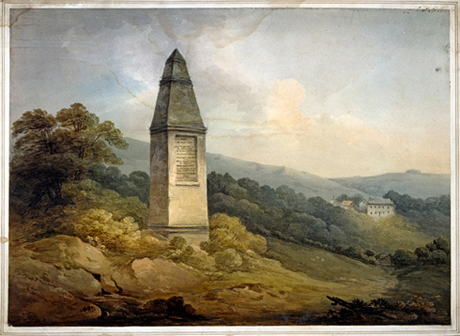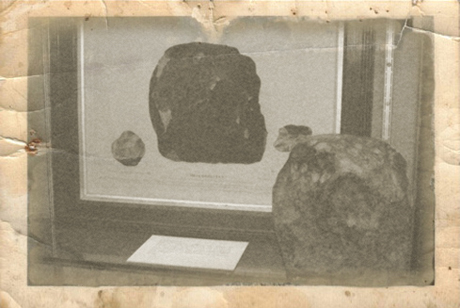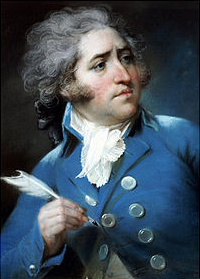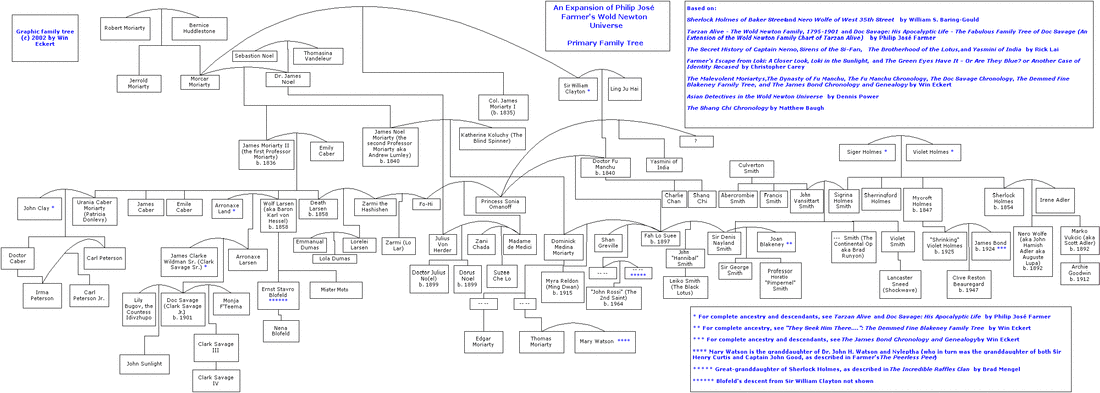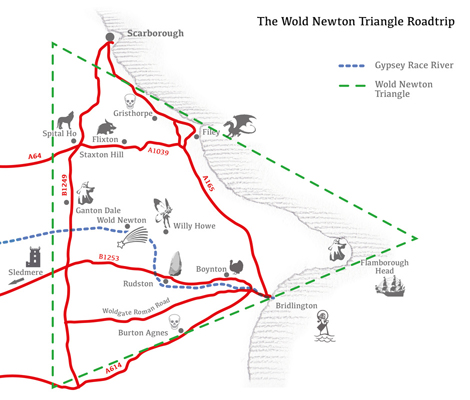The Mystery Of The Wold Newton Meteorite
|
I was chatting with a friend about mysterious events we knew of, when he brought up the Wold Newton meteorite. I'd never heard of it, and when he told me the story of the meteorite, I had to look it up. On the 13th of December 1795, near the small hamlet of Wold Newton, in East Yorkshire a thunder storm was raging. Through the gloomy skies, highlighted by the lightening flashes a "dark body" was seen arcing through the sky. The mysterious celestial object impacted in a field belonging to poet, playwright, local landowner and magistrate Major Edward Topham. There were a number of witnesses to the meteorite's passing and impact. Fortunately for us, the Major took a series of witness statements from those who saw a strange object pass through the ominous thunder clouds over-head and heard a sudden and extremely loud explosion, that "alarmed the surrounding countryside and created so distinctly the sensation that something very singular had happened."
|
That sensation was strongest of all for Major Topham's shepherd, John Shipley, who was within 150 yards of the spot and one of the farmhands who was so near that he was struck very forcibly by mud and earth as the meteorite plunged into the ground. It cut through a foot of soil and a further seven inches of chalky rock, creating a hole more than a yard in diameter and embedding itself firmly in the rock. The meteorite was embedded so firmly into the actual bedrock that it had to be dug out.
|
As the meteorite approached the earth two sons of the vicar of Wold Newton ran up to The Wold Cottage, where Major Topham lived, to investigate. When Topham heard about the fall and saw the large stone mass, he became a man on a mission and recorded the following: "All these witnesses that saw it fall agree perfectly in their account of the manner of it's fall, and that they saw a dark body moving through the air, and ultimately strike the ground: and though from their situations and characters in life, they could have no possible object in detailing a false account of this transaction. I felt so desirous of giving this matter every degree of authenticity that as a magistrate, I took their account on oath immediately on my return into the country. I saw no reason to doubt any of their evidence after the most minute investigation of it."
|
|
Provincial newspapers carried eye-witness reports of the phenomenon. The story was a sensation, and thanks to Major Topham's efforts in always "establishing the truth", this meteorite became the major player in gaining Worldwide acceptance that stones do sometimes fall from the sky. Topham already had a reputation as a playwright and journalist at the time, a he published a daily newspaper in London called The World. And wrote a regular column for the newspaper called The Schools, in which he reminisced about his time at Eton, and the people he knew. One person he wrote about was John Elwes, Member of Parliament, and noted eccentric and miser. It's believed that Major Topham's memoirs of Elwes were the inspiration for the character of Ebenezer Scrooge, in Charles Dickens' A Christmas Carol.
The bulk of the meteorite was donated to the Natural History Museum, in London. In 1799 a monumental obelisk was erected on the location of the stone's impact, by Major Topham. The inscription on the plaque reads, "Here, on this spot, December 13, 1795. Fell from the atmosphere, an extraordinary stone. In breadth twenty-eight inches. In length thirty-six inches, and whose weight was fifty-six pounds. This column in memory of it was erected by Edward Topham 1799." |
While chatting with my friend about the meteorite and it's history, he mentioned a mysterious event that occurred as the meteorite passed through the sky. He said how a stagecoach had been travelling through the countryside close-by the hamlet. He told me that the passengers inside the stagecoach were strangely altered by an inexplicable power emanating from the unearthly body as it streaked over them, and landed close-by. He claimed that they were somehow "hypnotised", and when they came round had no memory of what had happened. Yet, legend says that they were forever some how different, and the fortunes of all their families from that time since have taking strange and mysterious paths.
|
The story of the meteorite was true, there was a place called Wold Newton, Major Topham was a historical figure of that period. What was the truth to this mysterious twist my friend told me? Was it part of the folklore that had developed surrounding the meteorite's reporting? The story, which my friend insisted was part of the folklore, and commonly talked about in the local area of Wold Newton, was a fiction. Of course it was. But not a fiction from the period, a fiction created by American science fiction writer Philip José Farmer. In his fictional biographies Tarzan Alive (1972) and Doc Savage: His Apocalyptic Life (1973), Farmer incorporated the story of the Wold Newton meteorite.
|
Farmer created what was known as the Wold Newton family, which was later expanded by writer Win Scott Eckert, into what he called the Wold Newton Universe. A fictional cross-over of popular fictional characters, depicted in an alternate universe. Which all started with Farmer's two fictional "biographies", which proposed that the passing meteorite was radioactive and had caused genetic mutations in the passengers of nearby stagecoach. Many of their descendants were thus endowed with extremely high intelligence and strength, as well as an exceptional capacity and drive to perform good or, as the case may be, evil deeds. The progeny of these travellers are purported to have been the real-life originals of fictionalised characters, both heroic and villainous, over the last few hundred years, such as Sherlock Holmes, and the aforementioned Tarzan, Doc Savage. Farmer included a whole array of well known fictional characters in his Wold Newton family. The family tree of which can be seen below. (Click on the image to enlarge.)
The Mystery of The Wold Newton Triangle
|
The story of the meteorite is just one of the weird stories associated with what is referred to as the Wold Newton Triangle, an area of the Yorkshire Wolds between Scarborough and Bridlington that is renowned for mysterious happenings, and strange places that go back thousands of years.
From scary American Werewolf In London type encounters with red eyed beasts, to the screaming skull of Burton Agnes Hall and the first ever stories of zombies in England from the 12th century. All based around the village of Wold Newton, and the mysterious Gypsey Race, a water course that runs through the triangle. Known to the Ancient Britons as the Water of Woes, it was believed that the waters rose as an indicator of a major disaster to come. Also within the triangle is the village of Rudston, famous for its 25ft monolith, thought to have been erected around 1600 BC. The tallest prehistoric standing stone in the country. |
Rudston, the name is believed to be derived from the Old English "Rood-stane", meaning "cross-stone". It is considered to be the oldest inhabited village in Britain, dating back some 3000 - 4000 years. Wold Newton and Rudston are both with a few miles of Willy Howe, a mysterious 25ft prehistoric barrow. A place which folklore tells of as a dwelling place for fairy folk. Making the the Wold Newton Triangle an interesting and deeply mysterious region of East Yorkshire to visit.
|
Join the One Hull Of A City facebook group, and spread the word!
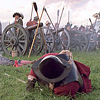
One Hull Of A Story: The Phantom Cannons Of Hull - The bizarre account of hundreds of people in and around the city, hearing the sound of war, but there was no war or armies in the area.
|

